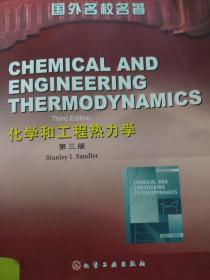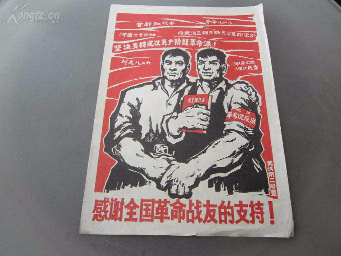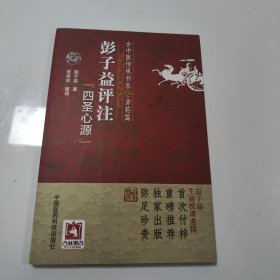
国外名校名著:化学和工程热力学(第3版)
¥ 168 八五品
仅1件
湖北荆门
认证卖家担保交易快速发货售后保障
作者[美]桑德乐 著
出版社化学工业出版社
出版时间2002-08
版次1
装帧平装
上书时间2021-11-14
- 最新上架
商品详情
- 品相描述:八五品
图书标准信息
- 作者 [美]桑德乐 著
- 出版社 化学工业出版社
- 出版时间 2002-08
- 版次 1
- ISBN 9787502528201
- 定价 75.00元
- 装帧 平装
- 开本 16开
- 纸张 胶版纸
- 页数 772页
- 正文语种 简体中文
- 【内容简介】
-
随着中国社会主义现代化建设进入新的阶段,以高质量的高等教育培养千百万专门人才,迎接新世纪的挑战,是实现“科教兴国”战略的基础工程,也是完成“十五”计划各项奋斗目标的重要保证。为切实加强高等学校本科教学并提高教学质量,教育部于2001年专门下发文件提出12条意见,对高等学校教学工作从认识、管理、教师队伍到教学方法和教学手段等给予指导。文件强调,按照“教育要面向现代化、面向世界、面向未来”的要求,为适应经济全球化和科技国际化的挑战,本科教育要创造条件使用英语等外语进行公共课和专业课教学。
在文件精神指导下,全国普通高等学校尤其是重点高校中兴起了使用国外教材开展教学活动的潮流。如生物技术与工程、环境科学与工程、材料科学与工程及作为其学科基础理论重要组成部分的化学技术和化学工程技术又是这股潮流中最为活跃的领域之一。在教育部“化工类专业人才培养方案及教学内容体系改革的研究与实践”项目组及“化工类专业创新人才培养模式、教学内容、教学方法和教学技术改革的研究与实践”项目组和“全国本科化学工程与工艺专业教学指导委员会”的指导和支持下,化学工业出版社及时启动了引进国外名校名著的教材工程。
出版社组织编辑人员多次赴国外学习考察,通过国外出版研究机构对国外著名的高等学校进行调查研究,搜集了一大批国际知名院校的现用教材选题。他们还联络国内重点高校的专家学者组建了“国外名校名著评价委员会”,对国外和国内高等本科教学进行比较研究,对教材内容质量进行审查评议,然后决定是否引进。他们与国外许多著名的出版机构建立了联系,有的还建立了长期合作关系,以掌握世界范围内优秀教材的出版动态。
以其化学化工专业领域的优势资源为基础,化学工业出版社的教材引进主要涉及化学、化学工程与工艺、环境科学与工程、生物技术与工程、材料科学与工程、制药工程等专业,对过程装备与控制工程、自动化等传统专业教材的引进也在规划之中。 - 【作者简介】
-
STANLEYI.SANDLERearnedtheB.Ch.E.degreein1962fromtheCityCollegeofNewY0rk.andthePh.D.inchemicalengineeringfromtheUniversityofMinnesotain1966.HewasthenaNationalScienceFoundationPostdoctoralFellowat theInstituteforMolecularPhysicsattheUniversityofMarylandforthe1966-67 academicyear.HejoinedthefacultyoftheUniversityofDelawarein1967asallassistantprofessor,andwaspromotedtoassociateprofessorin1970.professorin1973andHenryBelinduPontProfessorofChemicalEngineeringin1982.Hewasdepartmentchairmanfrom1982to1986.HecurrentlyisalsoprofessorofchemistryandbiochemistryattheUniversityofDelawareandfoundingdirectorofitsCenterforMolecularandEngineeringThermodynamics.HehasbeenavisitingprofessoratImperialCollege(London),theTechnicalUniversityofBerlin.theUniversityofQueensland(Australia)andtheUniversityofCalifornia.Berkeley.
Inadditiontothisbook.ProfessorSandieristheauthorof225researchpapersandamonograph,andheistheeditorofabookonthermodynamicmodelingandfiveconferenceproceedings.AmonghismanyawardsandhonorsareaFacultyScholarAward(1971)fromtheCamilleandHenryDreyfusFoundation,aResearchFellow-ship(1980)andUS.SeniorScientistAward(1988)fromtheAlexandervonHumboldtFoundation(Germany),the3MChemicalEngineeringLectureshipAward(1988)fromtheAmericanSocietyforEngineeringEducation,theProfessionalProgress(1984)andWarrenK.LewisAwards(1996)fromtheAmericanInstituteofChemicalEngineers,theE.VMurphreeAward(1996)fromtheAmericanChemicalSociety,theRossiniLectureshipAward(1997)fromtheInternationalUnionofPureandAppliedChemistry,andelectiontotheUS.NationalAcademyofEngineering - 【目录】
-
NOTATION
CHAPTER
INTRODUCTION
1.1TheCentralProblemsofThermodynamics
1.2ASystemofUnits
1.3TheEquilibriumState
1.4Pressure,Temperature,andEquilibrium
1.5Heat,Work,andtheConservationofEnergy
1.6SpecificationoftheEquilibriumState;IntensiveandExtensive
Variables;EquationsofState
1.7ASummaryofImportantExperimentalObservations
1.8ACommentontheDevelopmentofThermodynamics
Problems
CHAPTER
CONSERVATIONOFMASSANDENERGY
2.1AGeneralBalanceEquationandConservedQuantities
2.2ConservationofMass
2.3ConservationofEnergy
2.4TheThermodynamicPropertiesofMatter
2.5ApplicationsoftheMassandEnergyBalances
2.6ConservationofMomentum
2.7TheMicroscopicEquationsofChangeforThermodynamicsand
FluidMechanics(Optional)
Problems
CHAPTER
ENTROPY:ANADDITIONALBALANCEEQUATION
3.1Entropy:ANewConcept
3.2TheEntropyBalanceandReversibility
3.3Heat,Work,Engines,andEntropy
3.4EntropyChangesofMatter
3.5ApplicationsoftheEntropyBalance
3.6Liquefaction
3.7PowerGenerationandRefrigerationCycles
3.8TheThermodynamicsofMechanicalExplosions
3.9TheMicroscopicEntropyBalance(Optional)
Problems
CHAPTER
THETHERMODYNAMICPROPERTIESOFREAL
SUBSTANCES
4.1SomeMathematicalPreliminaries
4.2TheEvaluationofThermodynamicPartialDerivatives
4.3TheIdealGasandAbsolute-TemperatureScales
4.4TheEvaluationofChangesintheThermodynamicPropertiesofReal
SubstancesAccompanyingaChangeofState
4.5AnExampleInvolvingtheChangeofStateofaRealGas
4.6ThePrincipleofCorrespondingStates
4.7GeneralizedEquationsofState
4.8TheThirdLawofThermodynamics
4.9MoreAboutThermodynamicPartialDerivatives(Optional)
AppendixA4.1AProgramforThermodynamicProperties
CalculationsUsingthePeng-RobinsonCubicEquation
ofState,PR1
Problems
CHAPTER5EQUILIBRIUMANDSTABILITYINONE-COMPONENT
SYSTEMS
5.1TheCriteriaforEquilibrium
5.2StabilityofThermodynamicSystems
5.3PhaseEquilibria:ApplicationoftheEquilibriumandStability
CriteriatotheEquationofState
5.4TheMolarGibbsFreeEnergyandFugacityofaPure
Component
5.5TheCalculationofPureFluid-PhaseEquilibrium:TheComputation
ofVaporPressurefromanEquationofState
5.6TheSpecificationoftheEquilibriumThermodynamicStateofa
SystemofSeveralPhases:TheGibbsPhaseRulefora
One-ComponentSystem
5.7ThermodynamicPropertiesofPhaseTransitions
Problems
CHAPTER6THETHERMODYNAMICSOFMULTICOMPONENT
MIXTURES
6.1TheThermodynamicDescriptionofMixtures
6.2ThePartialMolarGibbsFreeEnergyandtheGeneralized
Gibbs-DuhemEquation
6.3ANotationforChemicalReactions
6.4TheEquationsofChangeforaMulticomponentSystem
6.5TheHeatofReactionandaConventionfortheThermodynamic
PropertiesofReactingMixtures
6.6TheExperimentalDeterminationofthePartialMolarVolumeand
Enthalpy
6.7CriteriaforPhaseEquilibriuminMulticomponentSystems
6.8TheCriteriaforChemicalEquilibrium,andCombinedChemicaland
PhaseEquilibrium
6.9TheSpecificationoftheEquilibriumThermodynamicStateofa
Multicomponent,MultiphaseSystem;theGibbsPhaseRule
6.10SomeConcludingRemarks
Problems
CHAPTER7THEESTIMATIONOFTHEGIBBSFREEENERGYAND
FUGACITYOFACOMPONENTINAMIXTURE
7.1TheIdealGasMixture
7.2ThePartialMolarGibbsFreeEnergyandFugacity
7.3TheIdealMixtureandExcessMixtureProperties
7.4TheFugacityofSpeciesinGaseous,Liquid,andSolidMixtures
7.5SeveralCorrelativeLiquidMixture(ActivityCoefficient)
Models
7.6TwoPredictiveActivityCoefficientModels
7.7ACorrespondingStatesPrincipleforMixtures;ThePseudocritical
ConstantMethod
7.8TheFugacityofSpeciesinNonsimpleMixtures
7.9SomeCommentsonReferenceandStandardStates
7.10ACombinedEquation-of-State--ExcessGibbsFreeEnergy
Models
7.11ElectrolyteSolutions
7.12ConcludingRemarks
AppendixA7.1AStatisticalMechanicalInterpretationoftheEntropyof
MixinginanIdealMixture
AppendixA7.2AProgramforMulticomponentVapor-Liquid
EquilibriumCalculationsUsingthePeng-Robinson
CubicEquationofState,VLMU
AppendixA7.3MulticomponentExcessGibbsFreeEnergy(Activity
Coefficient)Models
AppendixA7.4AProgramforthePredictionofActivityCoefficients
andLowPressureVapor-LiquidEquilibriumUsingthe
UNIFACModel,UNIFAC.
Problems
CHAPTER8PHASEEQUILIBRIUMINMIXTURESCHAPTER9CHEMICALEQUILIBRIUMANDTHEBALANCE
点击展开
点击收起
— 没有更多了 —












以下为对购买帮助不大的评价